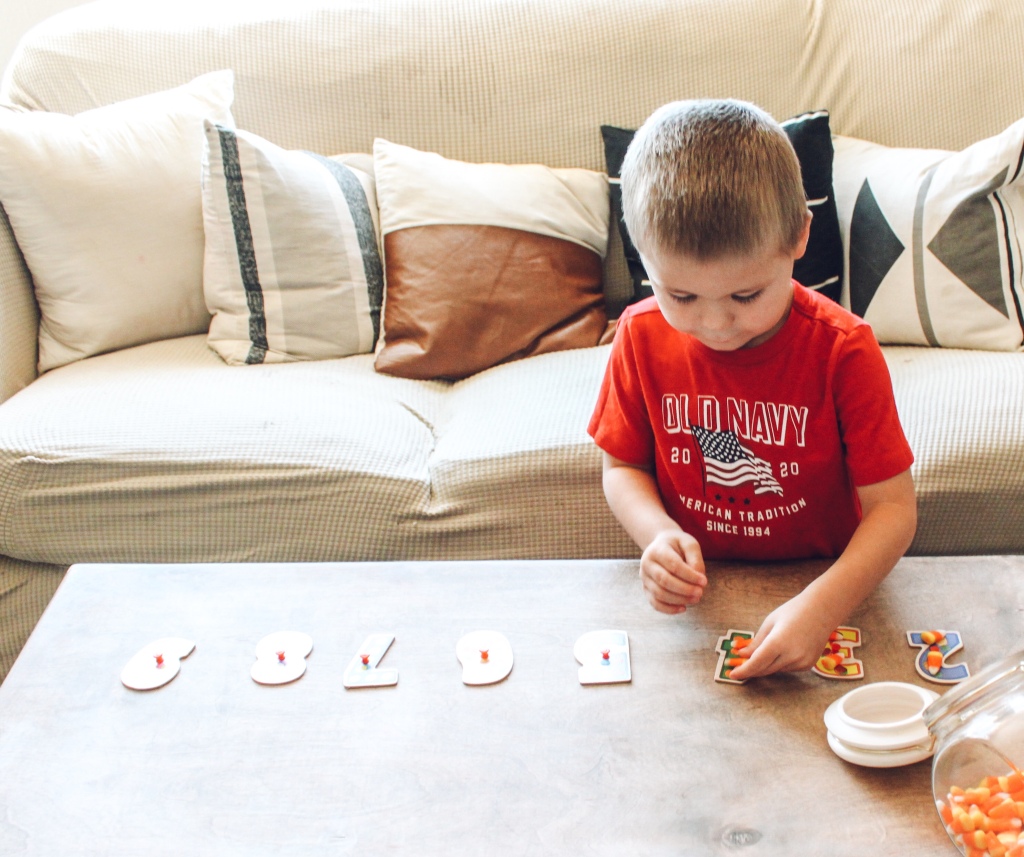
Corn. Eat it from a can. Off an ear. In bread. Creamed. Candy. Share it with a farm animal. Heck, let’s experiment with it too!
BOOK OF THE DAY AND STEAM ACTIVITY
Corn by Gail Gibbons

It’s our last week of September studies and time to learn about corn! This is harvest time in Idaho and it doesn’t quite feel like fall until the farms are alive with workers. Corn mazes are also a super popular attraction here. Every year a visit to the corn maze is on our bucket list and turning our annual outing into a themed field trip seemed fitting.
I found this book for a steal on Amazon and it was perfect. It’s less of a storybook and a little more educational. Not what I would typically choose for our library but a great tool for our homeschool preschool. It includes all kinds of information from the historical places corn has grown to it’s presentation at the first Thanksgiving. There are corn diagrams and even I learned a few new technicalities of one of my favorite vegetables.
Dancing Corn

Our STEAM activity was science focused. We played with reactive substances and used corn as a visual aid. The chemical reaction of vinegar and baking soda is probably going to be too advanced for your preschooler but it is an exciting representation of what can happen when you mix different elements together.
So what does happen when you mix vinegar and baking soda?
Baking soda, a solid, acts as a base substance and vinegar, a liquid, acts as an acidic substance. When an acid and a base are mixed, there is a transfer of a proton. This transfer changes the elemental makeup of the solution, and usually results in an exciting visual reaction. So when baking soda (made of sodium, hydrogen, carbon and oxygen) is combined with vinegar (made of hydrogen, carbon and oxygen), the proton is exchanged and the two elements turn into water, sodium acetate and carbon dioxide. This mean that our original mixture of a solid and a liquid now includes a gas! Carbon dioxide is a gas and gas rises. When gas rises through a liquid it appears as bubbles.
For our science experiment we are using water to dilute the vinegar and tone down the chemical reaction. This step is also necessary to make the corn kernels dance. The corn serves as a visual aid that will show us how the gas (carbon dioxide) is now moving through our jar as the chemical reaction happens. The gas bubbles push the kernels up to the top of the water and then, because they are heavier than water, they sink back down to the bottom of the jar. Our corn is dancing!
Supplies Needed
- corn kernels
- water
- vinegar
- baking soda
- spoon
- mason jar
Start by filling a large, clear jar halfway with water. We used a quart sized mason jar.
Then fill to the 3/4 mark with white vinegar. About 1 cup for our measurements.
Add some corn kernels to the jar. We found it was fun to add more while our chemical reaction happened too.
Use a spoon to pour in small amounts of baking soda and watch science in action! You can stir up the ingredients to help them mix better.
SING-A-LONG
ABC Phonics Song with Sounds for Children by Rock ‘N Learn
HANDS ON LEARNING AND WORKSHEET
Alphabet Matching and Candy Corn Counting

We focused on some letter recognition today with this simple activity. I purchased a downloadable set of flashcards from Green Urban Creative on Etsy and then printed and laminated them. I then pulled one of each letter from Lane’s magnet collected and placed them in a bowl. With all of the flashcards laid out on a table, I pulled one letter magnet at a time and asked him to place it with the “J is for Junco” card, or whichever matched. He did much better than I expected and I was so excited to watch him have fun showing me how much he already knows about letters!
Buy Oregon Alphabet Flashcards from Etsy here.
The we spent some time counting. Why not throw in a little something sweet? It’s our week to study corn and since it’s nearing Halloween and grocery stores are stocked with candy, we used candy corn. This time I borrowed the number pieces from one of his puzzles. I placed them on the table in a row and asked him to add the amount of candy corn that matched his number. One through three were pretty simple, and then I introduced to him the idea of addition. Like when he got to the number seven and had only four down. “Put one more piece of candy. Count them now. How many pieces are there?” We repeated this step for each number until he had the correct amount. Zero was also different, because there were no candy corns.
Before we took a break, Lane did a quick letter c tracing worksheet. His tracing ability and drawing control have really improved with these everyday coloring projects.
Click here for the Letter C Line Tracing worksheet.
CRAFT CORNER


Beaded Indian Corn
Since we read about how Native American’s used corn in our story time today, we made some really simple Indian corn cobs. This turned out to be a good exercise for fine motor function and color identification. All you need are pipe cleaners and beads.
Supplies Needed
- 4 brown pipe cleaners
- plastic crafting beads
Cross your pipe cleaners over each other at one point and then twist together so they are secured.
Add beads to each leg of pipe cleaner. It took us about 15 beads per leg.
Gather the tag ends of the pipe cleaners together and twist to secure.






